
Galaga '88 Review
Introduced with Taito’s Space Invaders and then quickly improved, the single-screen (fixed) shooter evolved fast, culminating with Namco’s sublime Galaga in 1981. Not much changed, really, between the two games: players still shifted a ship, left and right, at the bottom of the screen, blasting enemies attacking from above. But where Space Invaders was rote and slow and predictable, Galaga introduced a certain finesse and free-wheeling style—on both sides of the aisle—that turned the title into a classic still cherished today. Galaga was Space Invaders perfected, but that brought an unexpected consequence—a dead-end. The genre had transcended its point of relevancy. What else could be done?
Well, the scrolling screen, of course, a paradigm shift that would allow the genre to thrive a little longer.
But this new breed of blast-a-thon, be it Xevious or Gradius, held little in common with their single-screen predecessors. They were shooters of a different ilk. Nay, a different category. And thus, in Galaga’s wake…essentially left for dead.
Galaga ’88 was meant to reverse this course. Long before the retro remake/sequel had become a viable trend, Namco tried a follow-up that marries the single-screen constraints of the original with some modern flourishes. Players still flit a ship near the base of the screen, shooting alien bugs bombing—and dive-bombing—from overhead. But now there’s a sense of progression accompanying the on-screen madness. A context. An ending. A point to the whole commotion.
It’s this progression, along with some decidedly improved presentation—that makes Galaga ’88 so compelling. Procuring “warp capsules” allows the player to access alternate, harder levels…and achieve a better or worse ending, depending. Novices will have an easier time ignoring the capsules and simply piloting straight through—but ambitious types will want to access the top, most grueling tiers.
Similarly, the game adds some modern concessions in terms of boss fights and the occasional, scrolling stage. And like the original, players can upgrade their ship by allowing it to be “abducted” by an enemy flier. So long as the player has another life in reserve, he can then “rescue” his lost vessel and have the two unite for double the firepower. Galaga ’88 even allows for a third ship to join the formation, creating a trifecta of military might nigh-required for surviving the later waves of descending legions. The drawback, however, comes in this amalgam’s armada-wide size—getting hit is now twice as easy.
But beyond all else, the game’s success comes in its feel—Galaga ’88 duplicates the original’s fervor and response where many of its successors do not. This isn’t Gaplus or Galaga Legions or some misconceived mobile adaptation. This is the classic’s true sequel. Improved, but still faithful, to what made the first outing great.
Sadly, Namco never did make another game in this vein. No Galaga ’95, no Galaga 2018. But maybe, as the series approaches its 45th anniversary, the company might be inclined to try again. A “Galaga 2026” could both highlight and unite the two games, creating the quintessential adaptation the series has long deserved.--D
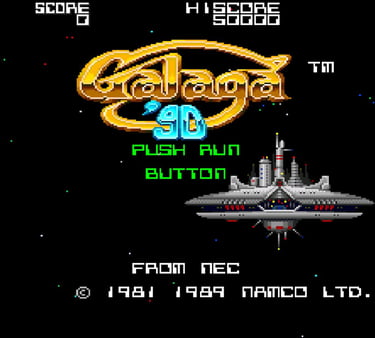

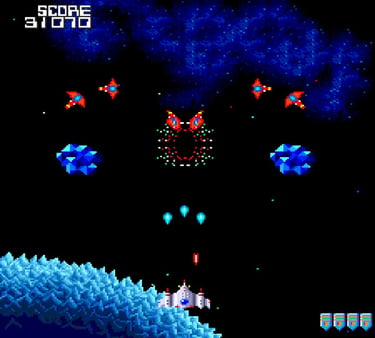


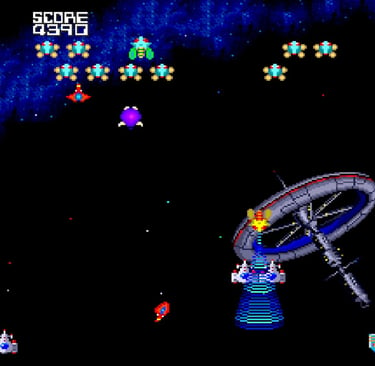

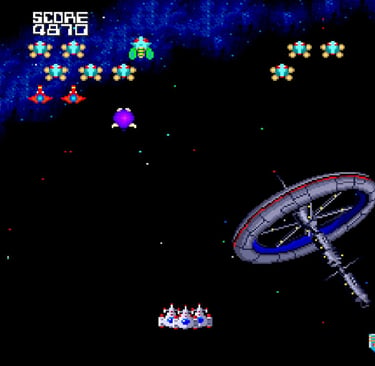
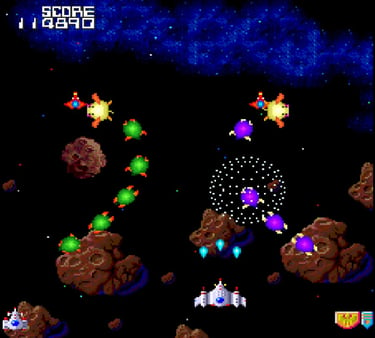

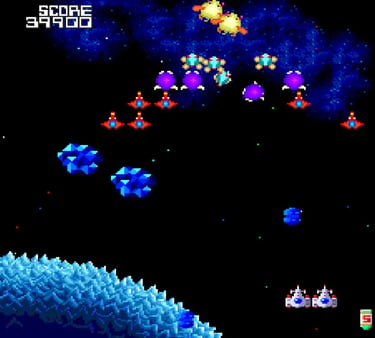

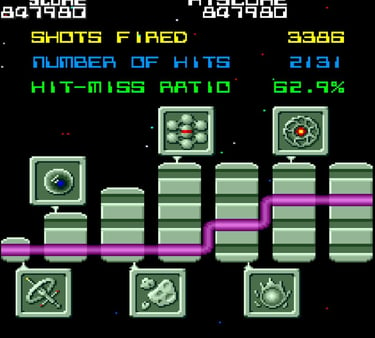

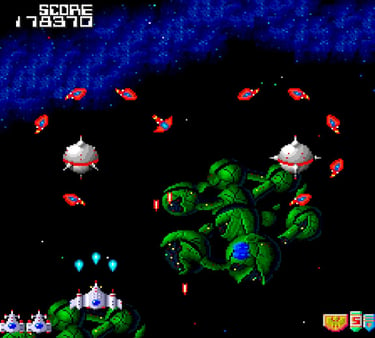

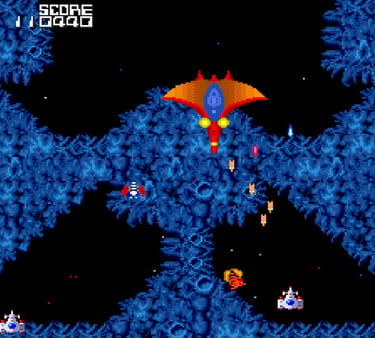



Platform: TurboGrafx-16/ PC Engine
Publisher: Namco
Developer: Namco
Release: '88 (Japan), '90 (U.S.A.)
As in the original, getting abducted provides the odd, not exactly intuitive way to increase one's firepower. It's a power-up that comes with a cost.
Collecting warp pods allows the player to skip across star routes, the higher ones being the more difficult. On this particular run, the player (me!) reached the end, but still missed the "best" ending.
Galaga '88 comes with bosses, one of the "modern" upgrades over the original. Most attack by filling the screen with obnoxious, dive-bombing enemies.
The game references other Namco games; a destroyed Bosconian space station is seen here in the background.
Contact: lostnostalgiaproductions@gmail.com
Website: www.lostnostalgia.com
Like what we're doing? Please consider throwing us a dollar into our Patreon page's tip jar!


